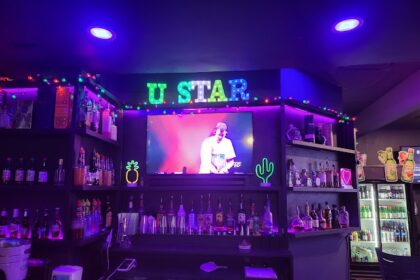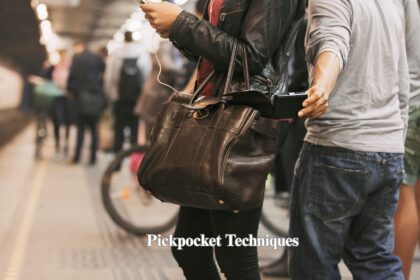After years of traveling and making every mistake in the book, I thought I’d become pretty street-smart. I could navigate foreign cities like a local, haggle in multiple languages, and spot overpriced tourist traps from a mile away. Then I went to Istanbul and got thoroughly schooled by a carpet seller who made me feel like I was his long-lost friend while systematically separating me from my money. That experience taught me that confidence without knowledge is just expensive naivety.
Travel scams have evolved far beyond the obvious “fake police” or “gold ring” tricks you read about in guidebooks. Today’s scammers are sophisticated, psychologically savvy, and incredibly good at making you feel like you’re the one getting a great deal. They prey on our desire to be adventurous, our fear of missing out, and our natural tendency to trust people who seem friendly and helpful.
This isn’t about becoming paranoid or suspicious of every local interaction – some of my best travel memories involve the genuine kindness of strangers. It’s about developing the awareness to distinguish between authentic hospitality and elaborate manipulation. Here are the hard-learned lessons from my most expensive education in travel scams.
The Friendship Scam: When Instant Best Friends Cost You Big
The Setup: In Marrakech, a young man approached me outside the famous Jemaa el-Fnaa square, speaking perfect English and claiming to be a local university student practicing his language skills. He was incredibly charming, knowledgeable about local history, and seemed genuinely interested in showing me the “real” Morocco that tourists never see.
The Hook: He offered to give me a personal tour of the medina, claiming he just wanted to practice English and wasn’t interested in money. He knew fascinating stories about every building, recommended amazing local restaurants, and even helped me navigate some aggressive vendors. For three hours, I felt like I’d made a genuine local friend.
The Sting: At the end of our “friendly” tour, he casually mentioned that his family owned a small rug shop and wondered if I’d like to see some authentic Berber carpets. By this point, I trusted him completely. What followed was two hours of high-pressure sales tactics involving his “uncle,” multiple cups of mint tea, and increasingly emotional appeals about supporting his family’s traditional business.
The Damage: I walked away with a carpet I didn’t want, couldn’t afford, and had no way to transport home, all for the bargain price of $800. The carpet was machine-made and available online for about $150.
The Red Flags I Missed:
- Approaching tourists in high-traffic areas with a personal story
- Unusually perfect English and extensive knowledge (suggesting professional training)
- Offering services “for free” with no clear benefit to himself
- Gradually building trust before introducing the commercial element
- Using emotional manipulation and family stories to justify high prices
The Lesson: Genuine friendships don’t typically begin with elaborate backstories and end with expensive purchases. When someone invests significant time in winning your trust, ask yourself what they’re hoping to get in return.
READ ALSO: USA Tourist Attractions Guide – 30 Best tourist attractions in the USA
The Official Emergency: When Fake Authority Figures Create Fake Crises
The Setup: While walking through a train station in Rome, two men in official-looking uniforms approached me, speaking rapid Italian and gesturing urgently at my backpack. One flashed what appeared to be a police badge while the other pointed to signs about security checks.
The Hook: They explained (in broken English) that there had been reports of drug smuggling through the station and they needed to check my bag immediately. They seemed genuinely concerned and spoke with the authority of law enforcement. Other travelers were watching, which made me feel like refusing would look suspicious.
The Manipulation: They insisted we move to a “more private area” for the search, leading me to a corner where they began methodically going through my belongings. They kept up a steady stream of official-sounding procedures while one distracted me with questions and the other went through my wallet “looking for false compartments.”
The Realization: I noticed one was wearing a uniform shirt with a different organization’s logo than his badge. When I started asking more detailed questions about their authority and requested to see identification again, they suddenly became less urgent about the “security threat” and more interested in leaving quickly.
The Damage: They managed to pocket about €100 from my wallet and had gone through all my personal information, including passport details and hotel reservations. More importantly, they’d obtained enough information to potentially target me later in my trip.
The Red Flags I Should Have Caught:
- Real police rarely approach solo tourists for random bag searches
- Legitimate law enforcement doesn’t rush you to isolated areas
- Official procedures don’t involve handling your money or documents out of sight
- Authentic uniforms and badges have consistent, matching details
- Real officers provide clear identification and answer questions patiently
The Lesson: When someone claims authority, verify it. Ask for official identification, request to see their supervisor, or suggest moving to a proper police station. Legitimate officials won’t be offended by these requests.
The Taxi Mathematics Miracle: When Meters Become Optional
The Setup: After a long flight into Bangkok, I was tired and just wanted to get to my hotel quickly. The taxi driver was friendly, spoke decent English, and assured me he’d use the meter as required by law. Everything seemed straightforward for what should have been a routine airport transfer.
The Manipulation: About halfway through the journey, he casually mentioned that there were unusual traffic conditions due to a “special event” and that the regular route was blocked. We’d need to take a longer route, and unfortunately, the meter wouldn’t accurately reflect the fair price due to the extra distance and traffic delays.
The Alternative Offer: He suggested we switch to a flat rate that would be “much fairer” than what the meter would show for the extended journey. His price seemed reasonable compared to what I’d been told airport taxis cost, and he was very apologetic about the inconvenience.
The Reality: There was no special event, no traffic delays, and no route changes. He had simply taken the longest possible route to my destination while spinning an elaborate story about circumstances beyond his control. The “fair” flat rate was about three times what the metered fare should have been.
The Education: Later, I learned this is one of the most common taxi scams worldwide. The driver creates a false sense of special circumstances that justify abandoning standard pricing, then positions himself as being generous by offering an alternative that’s actually far more expensive.
The Prevention Strategies:
- Always insist on the meter before getting in the taxi
- Use GPS on your phone to track the route and estimated arrival time
- Research typical fares for your route in advance
- Be suspicious of any “special circumstances” that arise mid-journey
- Consider using ride-sharing apps that provide route transparency and fixed pricing
The Lesson: When someone abandons established systems (like taxi meters) and offers you an alternative that supposedly benefits you, examine very carefully who’s actually benefiting.
The Restaurant Hospitality Trap: When Free Drinks Aren’t Free
The Setup: In a bustling restaurant district in Prague, an enthusiastic host outside a traditional Czech restaurant invited me in with promises of authentic local cuisine and a special welcome drink for tourists wanting to experience real Czech culture.
The Welcome: True to his word, they brought me a complimentary shot of local spirits along with a beautifully presented menu featuring traditional dishes with English descriptions. The waiter was attentive, the atmosphere was lively, and everything felt authentically local.
The Gradual Escalation: Throughout the meal, the staff kept bringing small “complimentary” additions – extra bread, a small appetizer, another shot “on the house,” and what they described as a traditional dessert that was “included with the meal.” Each addition was presented as generous hospitality.
The Bill Shock: When the check arrived, every single “complimentary” item was listed with hefty charges. The welcome drink was €15, the “free” bread was €8, and the “included” dessert was €12. The total bill was nearly triple what the main dish prices had suggested.
The Confrontation: When I questioned the charges, the staff suddenly became less friendly and claimed I had ordered all these items. They produced a menu with prices for these items (printed in tiny text) and insisted I was responsible for everything I had consumed.
The Psychological Trap: This scam works because it exploits our social conditioning around hospitality. When someone presents something as a gift or compliment, questioning it feels rude and ungrateful. By the time you realize you’re being charged, you’ve already consumed the items and feel obligated to pay.
The Defense Strategies:
- Explicitly confirm that “complimentary” items are actually free
- Ask to see prices for anything offered, even if presented as a gift
- Be wary of restaurants with aggressive outdoor promoters
- Review the menu carefully, including fine print and side notes
- Don’t be afraid to refuse items you didn’t specifically order
The Lesson: True hospitality doesn’t come with surprise bills. Legitimate businesses are transparent about their pricing from the beginning.
The Accommodation Bait and Switch: When Your Room Exists Only in Photos
The Setup: I booked what appeared to be a charming boutique hotel in Lisbon through a legitimate-looking website. The photos showed beautiful rooms, the reviews seemed genuine, and the price was reasonable for the location. I even received professional confirmation emails with detailed check-in instructions.
The Arrival: When I arrived at the address, I found a different hotel entirely – older, shabbier, and clearly not the place I’d booked. When I showed my confirmation to the desk clerk, they claimed my original hotel was “fully booked due to a conference” and that they were the “partner hotel” handling overflow guests.
The Alternative: They offered me a room in their establishment at the same rate I’d already paid, presenting it as a solution to an unfortunate overbooking situation. The room was significantly inferior to what I’d booked, but I was tired and it was late, so I accepted what seemed like their good-faith effort to accommodate me.
The Discovery: The next day, I discovered that the hotel I’d originally booked didn’t exist at all. The website was a sophisticated fake, and the “partner hotel” arrangement was part of an elaborate scam. The scammers had collected payment for a non-existent premium property and delivered customers to a budget establishment that was probably paying them a commission.
The Red Flags I Ignored:
- The original hotel had no phone number that connected to an actual business
- The website had no direct contact information beyond a web form
- The photos were professional but generic (likely stock photos)
- The price was suspiciously good for the claimed location and amenities
- The confirmation email came from a generic email service rather than a hotel domain
The Recovery Strategy: I immediately contacted my credit card company to dispute the charge and filed complaints with local tourism authorities. I also documented everything with photos and screenshots to support my case.
The Prevention Tactics:
- Book directly through hotel websites or established booking platforms
- Verify hotel phone numbers through independent sources
- Read recent reviews on multiple platforms
- Use reverse image searches on property photos to check for stock images
- Be suspicious of deals that seem too good to be true
The Cultural Experience Premium: When Tradition Comes with Hidden Costs
The Setup: In Bali, I was approached by a local man who offered to take me to a traditional ceremony that was happening in his village that evening. He explained that tourists rarely get to see authentic Balinese rituals and that his family would be honored to have a foreign guest witness their traditions.
The Build-Up: He spent considerable time educating me about the ceremony’s significance, the proper behavior expected of guests, and the privilege of being invited to such an intimate cultural event. He emphasized that this wasn’t a tourist show but a real community celebration.
The Experience: The ceremony was indeed authentic and beautiful. I felt genuinely privileged to witness it and was moved by the warmth with which the community welcomed me. It seemed like exactly the kind of meaningful cultural exchange that makes travel worthwhile.
The Expectation: At the end of the evening, my “host” explained that it was customary for honored guests to make a donation to the temple to help maintain the sacred spaces. He suggested an amount that seemed reasonable for such a special experience, and I was happy to contribute to the community.
The Reality Check: Later conversations with other travelers revealed that this “spontaneous invitation” happened to multiple tourists every week. The “traditional ceremony” occurred conveniently every few days, and the suggested donation amounts were carefully calibrated to extract maximum payment from grateful visitors.
The Ethical Complexity: This wasn’t exactly a scam – the ceremony was real, the community did benefit from donations, and I did have a meaningful cultural experience. However, the presentation was deliberately misleading about the spontaneous and exclusive nature of the invitation.
The Lesson: Authentic cultural experiences can coexist with commercial enterprises, but transparency matters. When someone presents a commercial activity as a spontaneous cultural sharing, question whether you’re getting the full story.
The Group Safety Strategy: When Numbers Don’t Equal Security
The Setup: While solo traveling in Morocco, I met a group of other travelers at my hostel who were planning a desert tour. They invited me to join them, explaining that traveling in a group would be safer and cheaper than going alone. The tour operator they’d found offered a great price for a multi-day desert experience.
The False Security: Traveling with a group did feel safer, and having other people to share the experience with made everything more enjoyable. We all felt like we were being smart travelers by banding together and looking out for each other.
The Collective Targeting: What we didn’t realize was that the tour operator specifically targeted groups of solo travelers because it was easier to control multiple people who didn’t know each other well. During the tour, we were subjected to various upselling schemes, pressure tactics, and ultimately left stranded at a remote location until we agreed to pay additional fees for services that were supposed to be included.
The Group Dynamics Problem: Because we were strangers who had just met, we couldn’t effectively coordinate our response to the pressure tactics. Some people were more willing to pay extra fees than others, creating division within the group that the scammers exploited.
The Isolation Factor: Being in a remote location with limited communication made it impossible to seek help or verify the legitimacy of the additional charges being demanded. The scammers had effectively isolated an entire group of people simultaneously.
The Lesson: Group travel can provide security, but only when the group members know and trust each other. Hastily assembled groups of strangers can actually be more vulnerable than solo travelers because they create a larger target with more complex dynamics to exploit.
Building Your Scam Detection Skills
After falling for these and many other schemes, I’ve developed a mental framework for evaluating suspicious situations:
The Urgency Test: Scammers often create artificial time pressure to prevent you from thinking critically. Legitimate opportunities rarely disappear if you take a few minutes to consider them carefully.
The Too-Good-To-Be-True Meter: When something seems unusually beneficial to you with no clear benefit to the other party, investigate their real motivation.
The Emotional Manipulation Check: Be especially cautious when someone uses guilt, fear, or flattery to influence your decisions. Professional scammers are experts at emotional manipulation.
The Verification Rule: Always verify claims through independent sources. If someone won’t allow you to verify their story or credentials, that’s a major red flag.
The Exit Strategy: Before engaging in any situation, identify how you can leave if things go wrong. Scammers often try to limit your options for backing out.
Staying Smart Without Becoming Cynical
The goal isn’t to become suspicious of every interaction with locals or to miss out on genuine cultural experiences because you’re afraid of being scammed. The goal is to develop enough awareness that you can engage with confidence while protecting yourself from obvious manipulation.
Some of my most treasured travel memories involve spontaneous interactions with locals who showed me genuine kindness with no ulterior motive. The key is learning to distinguish between authentic human connection and professional manipulation – a skill that serves you well both in travel and in life.
Remember that falling for a scam doesn’t make you stupid or naive. These schemes work because they’re designed by people who understand human psychology and have perfected their techniques on thousands of victims. The fact that you trusted someone who seemed trustworthy actually speaks well of your character.
The best defense against travel scams is knowledge, awareness, and the confidence to trust your instincts when something doesn’t feel right. Take reasonable precautions, stay alert to red flags, but don’t let fear of being scammed prevent you from having the authentic travel experiences that make exploring the world so rewarding.
Every experienced traveler has fallen for at least one scam, and every scam teaches you something valuable about human nature, including your own. The education is expensive, but the wisdom you gain makes every future trip safer and more enjoyable.
In another related article, Top 10 Must-See Tourist Attractions to Discover Indonesia







